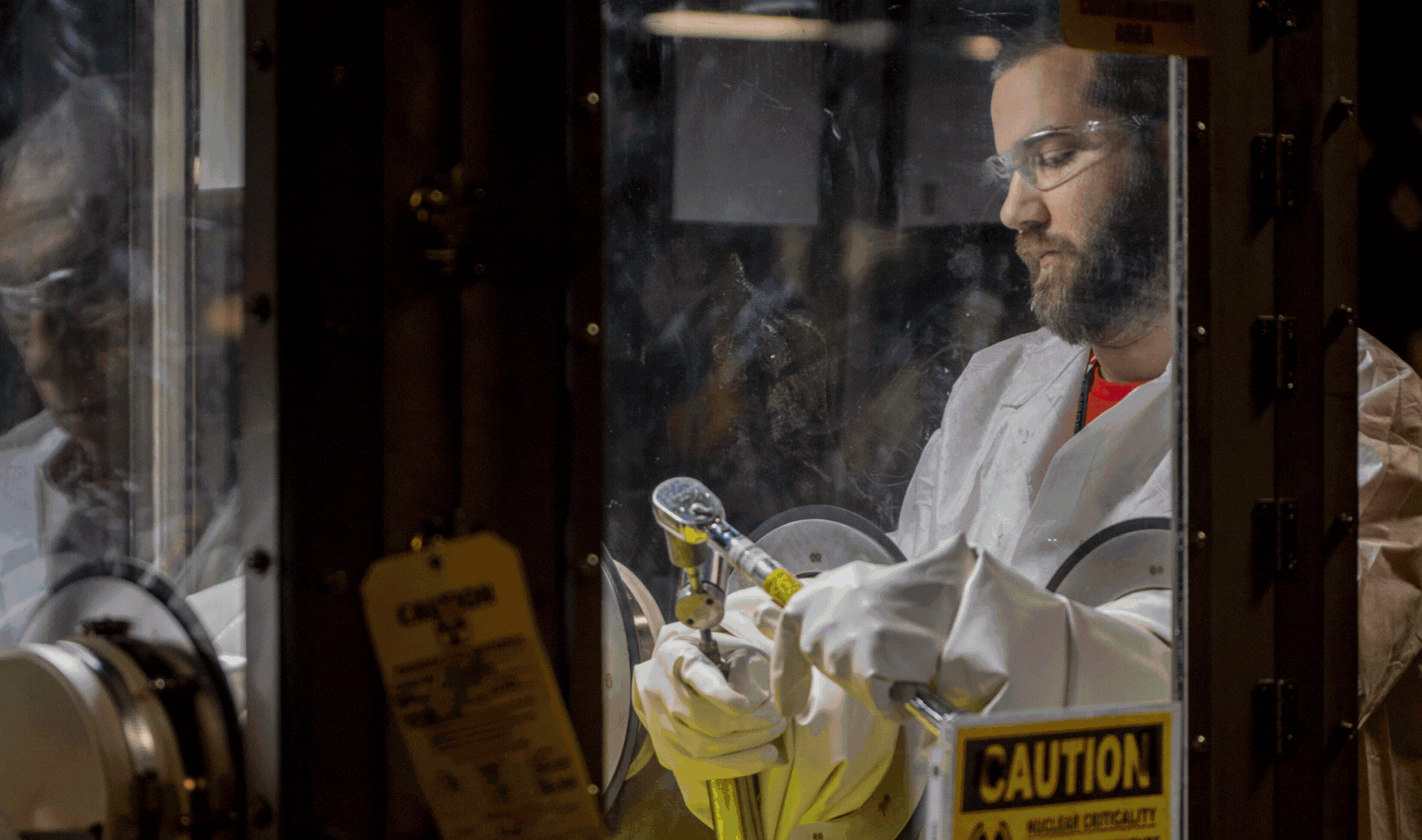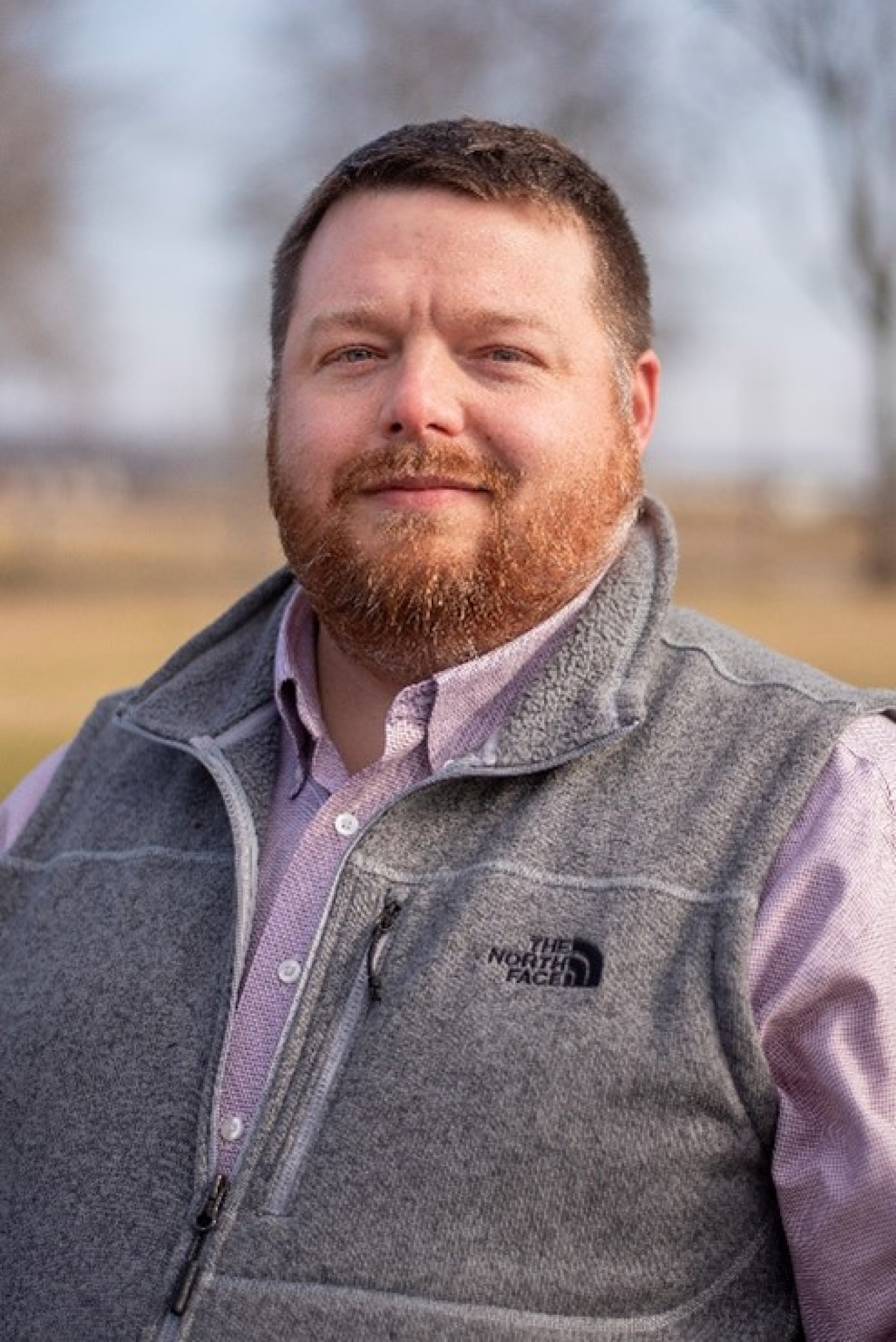The axiom that a picture is worth a thousand words is especially true when communicating the complex work at DOE cleanup sites, according to Dylan Nichols, photographer for EM’s Paducah Site.
Office of Environmental Management
January 9, 2024PADUCAH, Ky. – The axiom that a picture is worth a thousand words is especially true when communicating the complex work at DOE cleanup sites, according to Dylan Nichols, photographer for EM’s Paducah Site.
At the Paducah Site since 2011, Nichols is a photojournalist with the ability to find and capture engaging shots that help tell the story of the work supporting the mission, surrounding communities and the country.
Nichols is passionate about using his photography skills to draw in audiences.
“Seeing someone have the ‘ah-ha’ moment when they can connect the scope of a project with a photo is the most satisfying part of the job,” he said.

Employees at EM’s Paducah Site are the backbone of the Portsmouth/Paducah Project Office’s commitment to a safe, expedient environmental cleanup in Western Kentucky. Their ongoing engagement with stakeholders to realign the site’s regulatory strategy will provide a new focus on the path to cleanup success by providing the community with reuse opportunities to support future generations of West Kentuckians.
Employees at EM’s Paducah Site are the backbone of the Portsmouth/Paducah Project Office’s commitment to a safe, expedient environmental cleanup in Western Kentucky. Their ongoing engagement with stakeholders to realign the site’s regulatory strategy will provide a new focus on the path to cleanup success by providing the community with reuse opportunities to support future generations of West Kentuckians.
In 1950, the United States selected a 3,556-acre tract of federal land near Paducah, Kentucky, to construct a gaseous diffusion uranium enrichment plant. The plant was first used to enrich uranium for military reactors and the nation’s first nuclear weapons program. Today, EM oversees environmental cleanup there, including depleted uranium hexafluoride conversion.
Completing this work as part of the world’s largest environmental cleanup involves decades of intense planning and execution and thousands of federal and contractor employees across dozens of disciplines — all to meet the commitment to keep communities near cleanup sites safe and fully informed.
Conveying this message in a manner that reaches all audiences can be complex. That is where Nichols’ prowess with the camera has been successful.
With one of his photos recently selected for the cover of EM’s 2023 Year in Review, Nichols sat down for an interview with EM Update to expand on how his camerawork helps illustrate the Paducah Site’s cleanup progress.
Gabe Puckett, deactivation maintenance mechanic with Paducah Site deactivation and remediation contractor Four Rivers Nuclear Partnership, installs welding curtains on the dust collection system in Unit 6 Cell 3 of the C-333 Process Building during Phase II construction of the Material-Sizing Area. This photo was selected as the front cover image on EM’s 2023 Year in Review.

Since 2011, Dylan Nichols' unique eye has captured distinctive photos of DOE’s Paducah Site, giving audiences an intimate and fresh perspective of the Paducah cleanup mission.
What is your favorite part of the job?
My favorite part of the job is getting to collaborate with our technical and field organizations to capture photos that can effectively tell the success stories of the projects and simplify complex challenges to effectively communicate with our stakeholders.
How did you become interested in photography and what steps did you take to pursue a career in the field?
I became interested in photography during high school when I was assigned a camera for our school newspaper and yearbook. I studied photojournalism at Western Kentucky University and had a brief stint in print media. When an opportunity on the communications teams for a contractor at the Paducah Site opened, I applied for the job and have had great mentors through the years.
How do you feel your photography work supports the cleanup mission?
I’ve been fortunate to be a part of a team that is passionate about their work. I know the pride that the people who work at the site take in their jobs and my goal is to emphasize the human element, which is crucial to the success of the cleanup mission, in my photographs. It makes it all worth it when people share how excited they are to see their projects featured in photographs and it helps the whole site to connect their work to the success of a project.
As we enter 2024, what would you encourage people to try and do more of this year?
I would encourage everyone to take time to learn from the people they work with. One of the best parts of my job is getting to learn from all the different organizations at the site. There are lots of talented people at the Paducah Site and across the DOE complex and everyone has an important role in the success of the cleanup mission.
Is there a project you are particularly excited to work on in 2024?
We are in the planning stages to demolish a 325-foot-tall deactivated, high pressure fire water tower. Also, we will continue to make progress in the Material-Sizing Area to support the deactivation of the C-333 Process Building, the first of four process buildings to be demolished at the Paducah Site.
Dylan Nichols Photo Gallery
To receive the latest news and updates about the Office of Environment Management, submit your e-mail address.

















